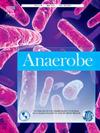Phenotypic and genomic characterization of Clostridioides difficile strains involved in multiple recurrences
IF 2.6
3区 生物学
Q3 MICROBIOLOGY
引用次数: 0
Abstract
Background
Multiple relapses of Clostridioides difficile infections (CDI) are frequent, impact patients' quality of life, and are challenging to treat. These relapses are either linked to the patient's conditions (immunity, intestinal dysbiosis) or potentially to strain-specific characteristics.
Objectives
This study aims to determine the genomic and phenotypic characteristics of C. difficile (CD) strains associated with multiple relapses of CDIs (rCDI).
Material and methods
Between 2019 and 2022, 10 CD strains responsible for multiple (≥2) relapses were matched on PCR ribotype to 10 CD control strains isolated from patients with a single episode. Genomic (resistome, virulome, mobile genetic elements) and phenotypic (motility, sporulation, germination, biofilm production, stress resistance) characteristics of relapse and control strains were compared.
Results
No significant genomic or phenotypic differences were identified between strains involved in multiple relapses and control strains. Our analyses revealed significant genomic and phenotypic variability among strains.
Conclusion
The origin of rCDI does not seem to be directly related to the C. difficile strain, suggesting that these relapses are more likely associated with other factors, such as intestinal dysbiosis or the patient's immune status.

艰难梭菌多次复发的表型和基因组特征。
背景:艰难梭菌感染(clostridiides difficile infections, CDI)多次复发是常见的,影响患者的生活质量,治疗具有挑战性。这些复发要么与患者的状况(免疫、肠道生态失调)有关,要么可能与菌株特异性特征有关。目的:本研究旨在确定艰难梭菌(CD)菌株与多次复发cdi (rCDI)相关的基因组和表型特征。材料和方法:在2019年至2022年期间,将10株导致多次(≥2次)复发的CD菌株与从单次发作患者中分离的10株CD对照菌株进行PCR核糖型匹配。比较了复发菌株和对照菌株的基因组(抗性组、病毒组、移动遗传元件)和表型(运动性、产孢、萌发、生物膜生成、抗逆性)特征。结果:在多次复发的菌株和对照菌株之间没有发现显著的基因组或表型差异。我们的分析揭示了菌株之间显著的基因组和表型变异。结论:rCDI的起源似乎与艰难梭菌菌株没有直接关系,提示这些复发更可能与其他因素有关,如肠道生态失调或患者的免疫状态。
本文章由计算机程序翻译,如有差异,请以英文原文为准。
求助全文
约1分钟内获得全文
求助全文
来源期刊

Anaerobe
生物-微生物学
CiteScore
5.20
自引率
8.70%
发文量
137
审稿时长
76 days
期刊介绍:
Anaerobe is essential reading for those who wish to remain at the forefront of discoveries relating to life processes of strictly anaerobes. The journal is multi-disciplinary, and provides a unique forum for those investigating anaerobic organisms that cause infections in humans and animals, as well as anaerobes that play roles in microbiomes or environmental processes.
Anaerobe publishes reviews, mini reviews, original research articles, notes and case reports. Relevant topics fall into the broad categories of anaerobes in human and animal diseases, anaerobes in the microbiome, anaerobes in the environment, diagnosis of anaerobes in clinical microbiology laboratories, molecular biology, genetics, pathogenesis, toxins and antibiotic susceptibility of anaerobic bacteria.
 求助内容:
求助内容: 应助结果提醒方式:
应助结果提醒方式:


